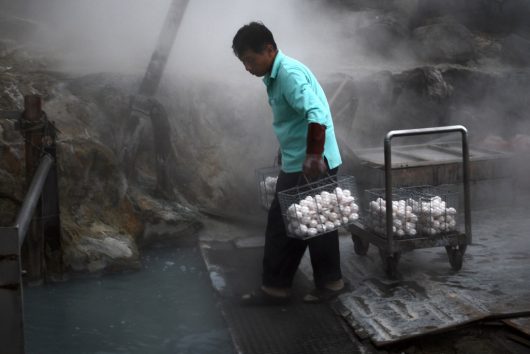Small Island, Big Appetite: Seven Facts About Hunger in Japan

While Japan enjoys one of the largest economies in the world after the U.S. and China, hunger in Japan is an undeniable threat to one of the most highly developed nations. Here are the top seven facts you should know about the imminent food crisis of the most populous island nation:
- Nearly 16 percent of two-parent Japanese families are financially unable to provide enough food for their children — this figure jumps to 32 percent among single-parent households.
As a leader in child nutrition programs, Japan is tackling food insecurity by improving its meal programs for children who live in food-insecure households.
Non-profit organizations such as Second Harvest Japan help fight hunger in Japan by serving 100 families, 75 percent of which are single mothers, with weekly or monthly food shipments. - Japan relies heavily on food imports.
Producing only 39 percent of the country’s food demand, Japan currently has the lowest food self-sufficiency ratio among all major developed countries, compared to Britain producing 70 percent and France producing 120 percent of what each country consumes respectively.
Reliance on food imports puts Japan’s meager food supply in a vulnerable position as hunger worsens. - Japan’s traditionally pescetarian diet has embraced the high protein and high fat “Western diet” which has spiked demand for imported food — especially beef.
From living off of what the local marine life offers, Japan is now the largest meat importer in the world. Not only is Japan’s food supply more fragile because it relies on imports, but studies also show that global meat production has severe environmental consequences.
Even if Japan began domestically producing meat, Japan would need to devote 50 percent of its arable land to meet the demand for just chicken and pork. - Current overpopulation and fears of future underpopulation are complicating Japan’s hunger crisis.
Tokyo alone boasts nearly 14 million residents, making it the most populous city in the world. However, Japan’s population has shrunk by 1 million in the past five years and is aging quickly.
As the population ages and low fertility rates prevail, Japan’s economy is expected to shrink and projected to have fewer farmers and fewer people to pay for food imports. - Japan’s agricultural sector has shrunk to one percent of its GDP.
In the wake of Japan’s industry and tourism boom, farmers found that they could make more profit selling their land or renting it rather than cultivating it.
The agricultural shift to a more industrial focus is the primary culprit to blame for Japan’s food insecurity. - Hunger in Japan is driving the country to set its sights on developing arable African land.
Instead of focusing on domestic efforts to prevent further food insecurity, Japan is helping Mozambique and other developing regions of Africa to become future exporters for Japan’s food demand.
Japan’s ProSavana project has been criticized as a “neo-colonialist economic exploitation” that is sold to Mozambique and the international community as sustainable agricultural development, according to the Journal of Global Initiatives.
The UNAC President Augusto Mafigo voiced his concerns for the possible consequences of the ProSavana project: “We are extremely frustrated that the ProSavana program is not designed for the weak. It is designed for facilitating companies to acquire land. If that really happens, that would destroy our community.” - Japan Today reports that annual food waste in Japan amounts to as much as 18 million tons.
A projected 5-8 million tons of wasted food is actually edible but is discarded because of small blemishes or visual imperfections. If Japan would take a cue from France, who recently made it illegal for supermarkets to waste edible food, the amount of edible food waste rescued in Japan would be equivalent — or even surpass — the amount of annual global food aid.
As one of the most prosperous nations in the world, Japan risks underestimating its fragile food supply. To address the roots of hunger in Japan, solutions centered on domestic development rather than international food importing is crucial.
– Daniela Sarabia
Photo: Flickr
